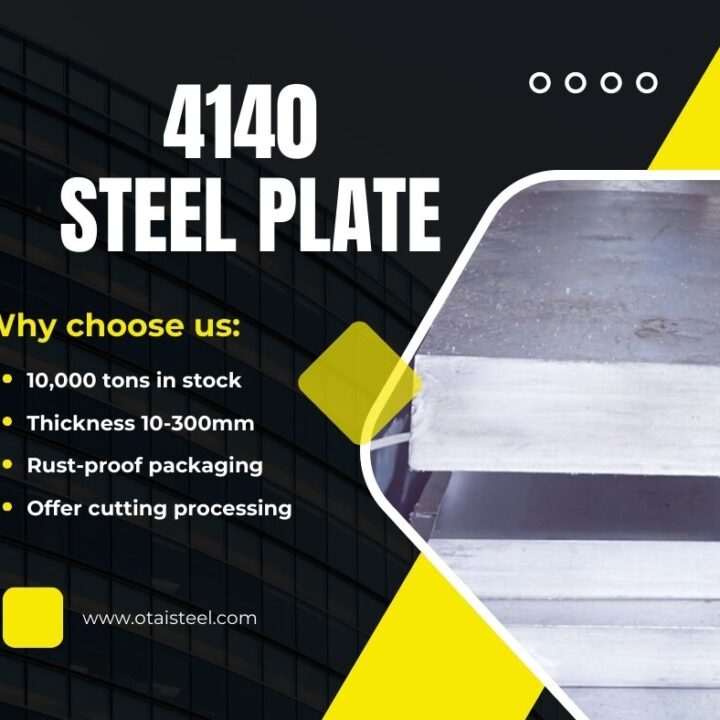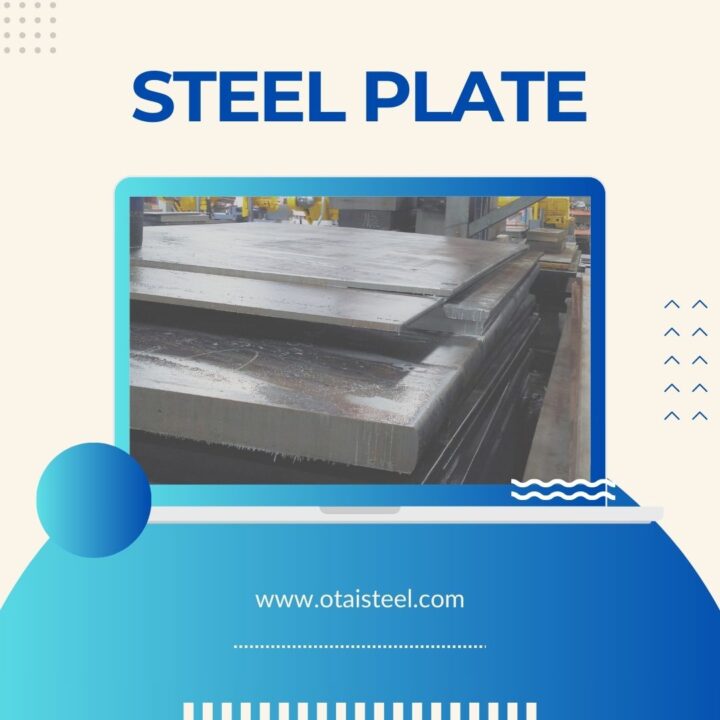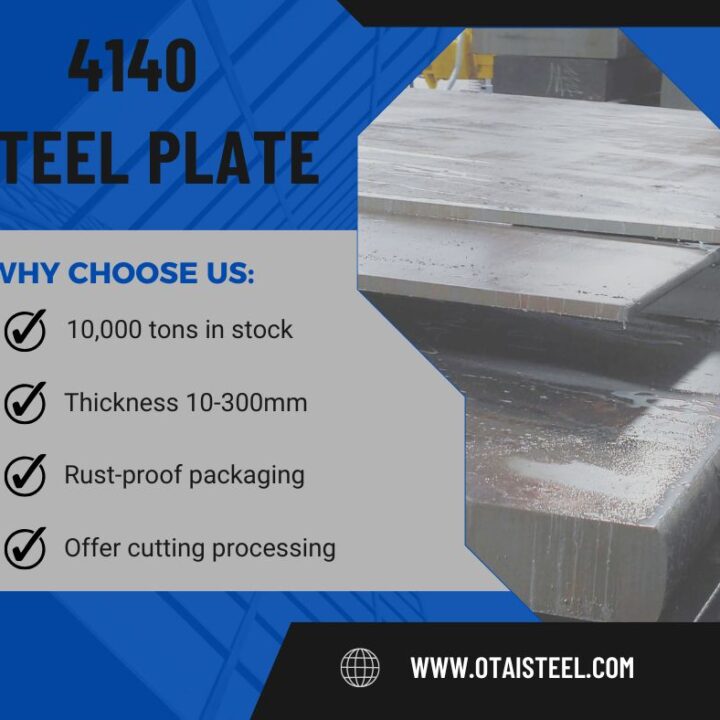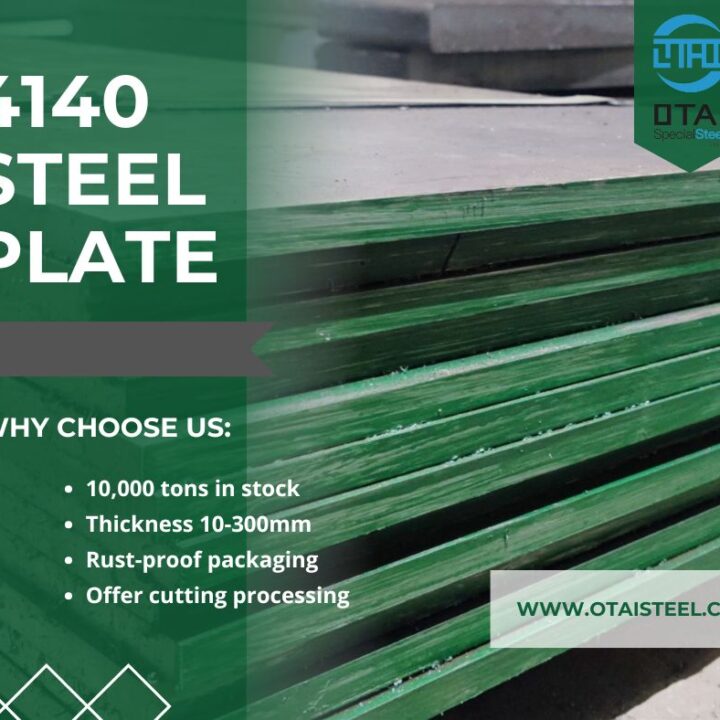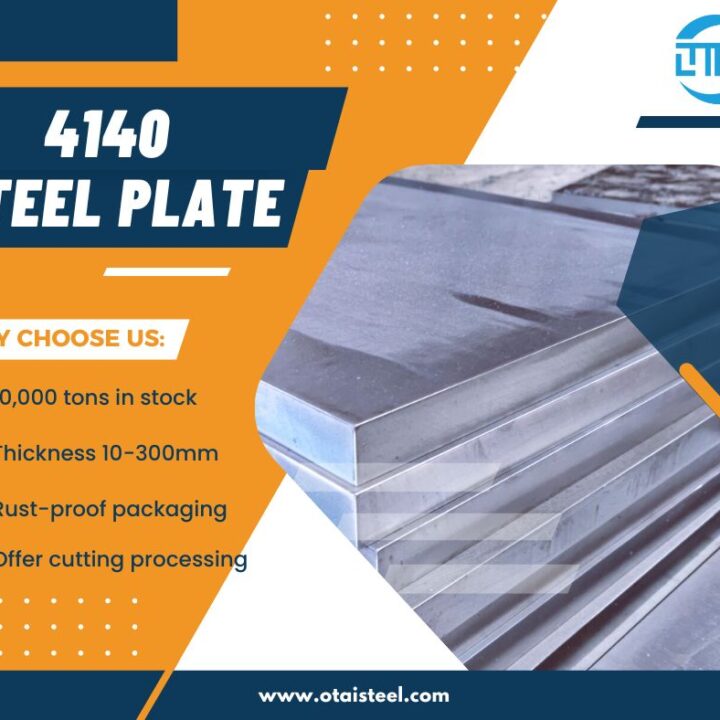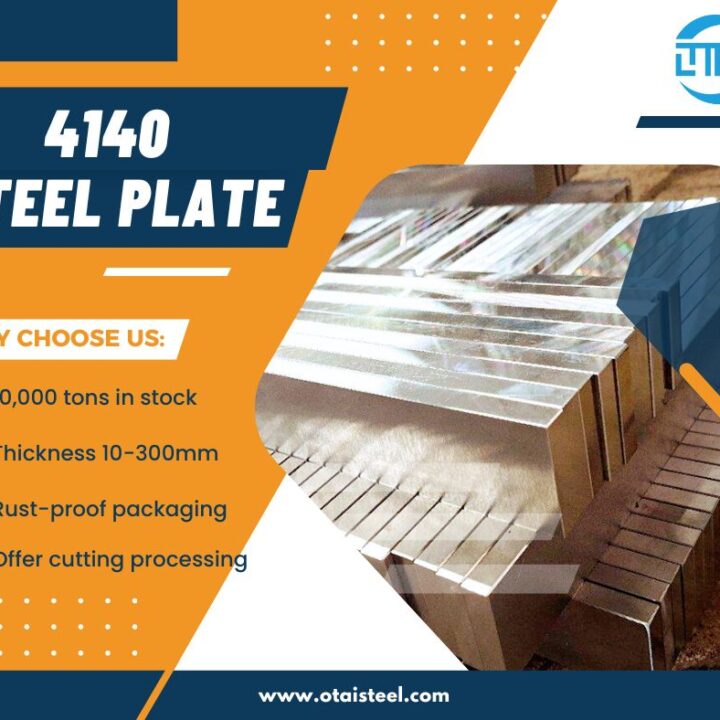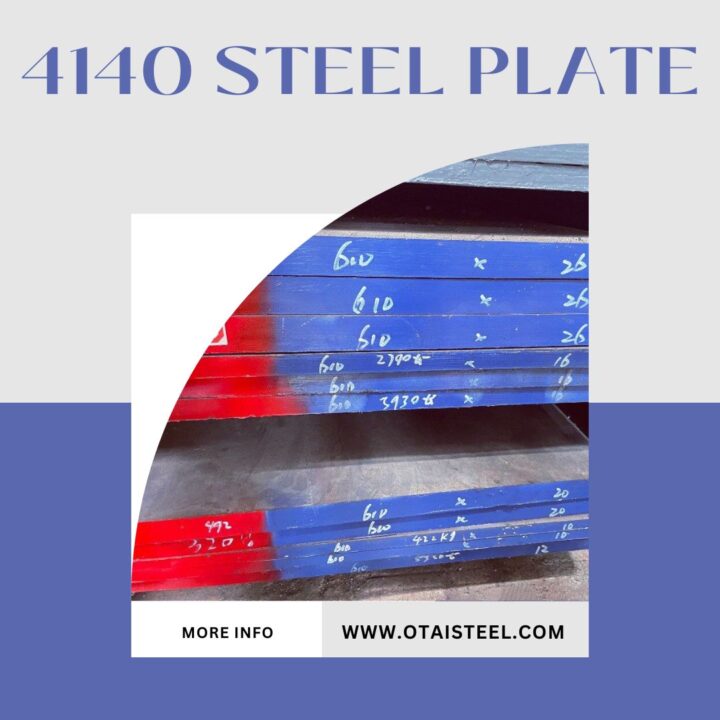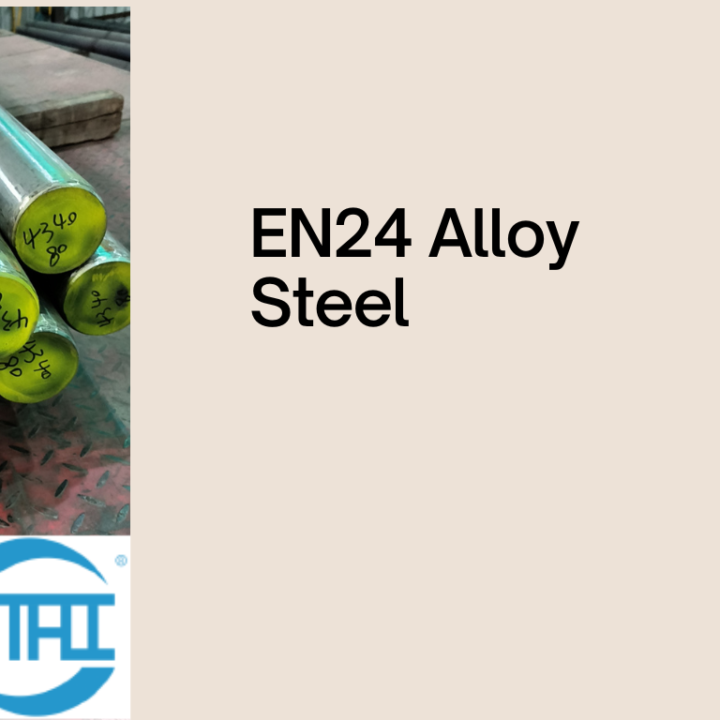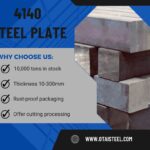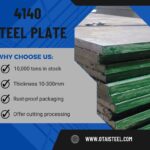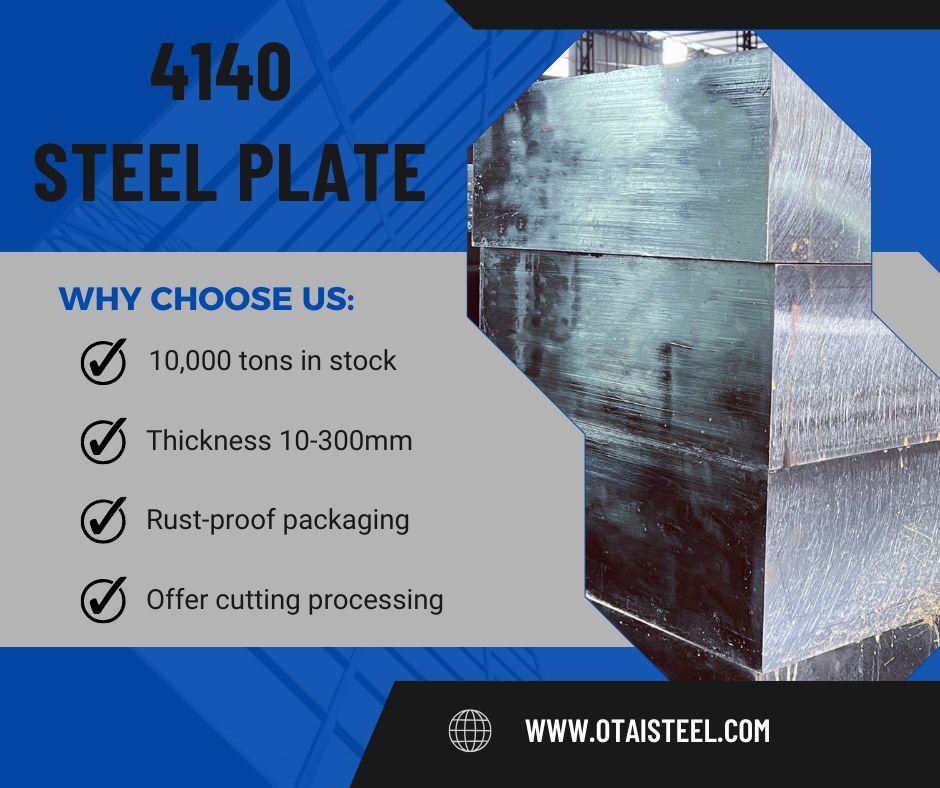
When engineers look for a reliable alloy steel that balances strength, toughness, and machinability, ASTM 4140 steel often tops the list. This chromium-molybdenum alloy is widely used in automotive, aerospace, oil & gas, and heavy equipment manufacturing. In this guide, we’ll explore its specification, chemical composition, mechanical properties, and real-world applications, so you can see why it’s such a popular choice.
🔧 ASTM 4140 Steel Specification
ASTM 4140 steel falls under the ASTM A29 and ASTM A322 standards for alloy steel bars. It is classified as a low-alloy steel with chromium and molybdenum as the main alloying elements.
Typical supply conditions:
-
Annealed – Soft and machinable
-
Normalized – Better grain structure, moderate strength
-
Quenched & Tempered – High strength and hardness for demanding applications
This standard ensures consistency in chemical composition and mechanical performance, which is critical for high-stress components.
🧪 4140 Steel Chemical Composition
The chemical composition of ASTM 4140 steel determines its strength, hardenability, and toughness.
| Element | Content (%) | Function |
|---|---|---|
| Carbon (C) | 0.38 – 0.43 | Adds hardness and tensile strength |
| Chromium (Cr) | 0.80 – 1.10 | Improves wear resistance and hardenability |
| Molybdenum (Mo) | 0.15 – 0.25 | Increases toughness and high-temperature strength |
| Manganese (Mn) | 0.75 – 1.00 | Enhances tensile strength and hardenability |
| Silicon (Si) | 0.15 – 0.35 | Strengthens ferrite and boosts elasticity |
| Phosphorus (P) | ≤ 0.035 | Kept low to maintain toughness |
| Sulfur (S) | ≤ 0.040 | Improves machinability slightly |
This well-balanced chemistry allows for deep hardening during quenching and excellent mechanical performance after heat treatment.
💪 4140 Steel Mechanical Properties
ASTM 4140 steel exhibits excellent mechanical properties that make it a go-to choice for heavy-duty applications.
| Property | Annealed Condition | Quenched & Tempered |
|---|---|---|
| Tensile Strength | ~655 MPa | 850 – 1080 MPa |
| Yield Strength | ~415 MPa | 700 – 950 MPa |
| Hardness (HB/HRC) | ~197 HB | 28 – 32 HRC (can exceed 50 HRC after special tempering) |
| Elongation | ~25% | ~12% |
| Charpy Impact | High | Excellent toughness |
These properties make it suitable for parts that face shock loading, fatigue, and wear.
🔥 Heat Treatment of ASTM 4140 Steel
You can tailor ASTM 4140 steel heat treatment to meet your exact requirements:
-
Annealing – Heat to 800–850°C, then furnace cool to soften for machining.
-
Quenching & Tempering – Heat to ~850°C, quench in oil or water, then temper to achieve desired hardness (28–38 HRC typical).
-
Nitriding – Diffuse nitrogen into the surface to reach 55–60 HRC without changing core toughness.
-
Stress Relieving – Heat to 540–680°C after machining or welding to minimize residual stress.
Choosing the right heat treatment ensures the right combination of hardness, toughness, and fatigue strength.
🛠️ Machining and Welding Characteristics
ASTM 4140 steel machining is relatively easy in the annealed state. Its machinability rating is about 65% compared to 1112 free-machining steel. For best results, use sharp cutting tools, proper coolant, and finish machining before quenching.
For welding, preheat to 200–300°C and perform post-weld stress relief to avoid cracking. This makes it suitable even for welded assemblies under load.
🏗️ 4140 Steel Applications
Thanks to its excellent strength and toughness, ASTM 4140 steel is widely used in multiple industries:
| Industry | Applications |
|---|---|
| Automotive | Crankshafts, gears, axle shafts, steering components |
| Oil & Gas | Drill collars, tool joints, couplings |
| Manufacturing | Shafts, spindles, bolts, machine parts |
| Construction | Pins, couplers, heavy-duty brackets |
| Aerospace | Structural components with fatigue resistance |
Its combination of tensile strength and wear resistance ensures long service life even under extreme conditions.
📊 ASTM 4140 Steel Equivalent Grades
Engineers often compare ASTM 4140 steel equivalent grades to select suitable substitutes:
| Standard | Equivalent Grade |
|---|---|
| DIN (Germany) | 42CrMo4 |
| JIS (Japan) | SCM440 |
| GB (China) | 42CrMo |
| BS (UK) | 708M40 |
Knowing equivalents helps you source material globally without compromising quality.
🌟 Why Choose Otai Special Steel?
At Otai Special Steel, we keep more than 10,000 tons of ASTM 4140 steel plates and bars in stock, thickness from 6mm to 300mm. Our advantages include:
-
✅ Reliable Quality – UT inspection, chemical composition testing, and third-party certification available
-
✅ Tailor-Made Service – Cutting, heat treatment, and custom packaging
-
✅ Competitive Pricing – Direct factory sourcing reduces your procurement cost
-
✅ Global Reputation – Supplying to top companies like Thyssenkrupp and Schlumberger
-
✅ Fast Delivery – Large inventory ready to ship
❓ FAQ
Q1: Can ASTM 4140 steel be surface hardened?
A: Yes, nitriding or induction hardening can increase surface hardness up to 60 HRC.
Q2: What’s the machinability of ASTM 4140 steel?
A: Around 65%, best machined in the annealed state for tool life efficiency.
Q3: Is ASTM 4140 steel suitable for welding?
A: Yes, with preheating and post-weld stress relief to prevent cracking.
Q4: How does ASTM 4140 compare to 4340?
A: 4340 offers slightly higher toughness due to its nickel content, but 4140 is more cost-effective and widely available.
Q5: What is the maximum hardness achievable?
A: Up to 50–55 HRC after quenching and tempering, depending on tempering temperature.

